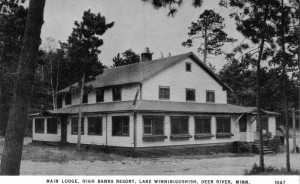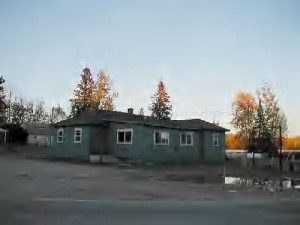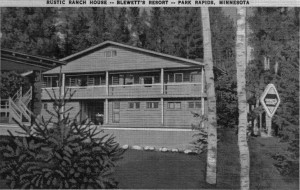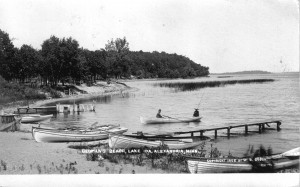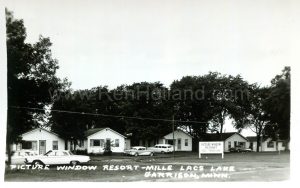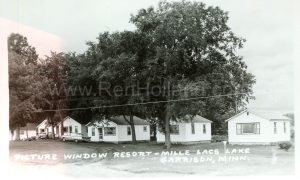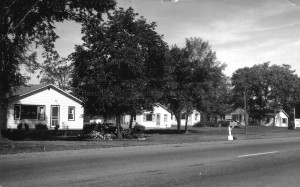The Greyhound Bus Line was an important part of rural life until the late 1950s, when public ground transportation began a sharp decline. During the 1940s two daily buses operated between Bemidji and Minneapolis. The last bus returned to Bemidji near midnight each day, stopping at Itasca State Park during the tourist season.
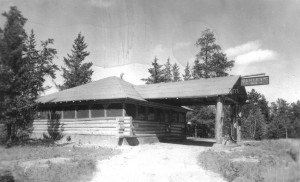
Oehler’s Resort, ca 1930
Pine Hollow Resort is located on Island Lake between Park Rapids and Itasca Park. It was established as Oehler’s Resort in the 1920s. The Greyhound Bus Line passed within a few feet of its main lodge. However, when the curves were straightened for Highway 71 in the 1930s the main lodge disappeared from view, a hundred yards from the new highway.
One warm, summer night in the late 1940s, a young girl, perhaps twelve or thirteen years old, boarded the late Greyhound at Park Rapids. She was to be let off at Pine Hollow Resort. It was only a nine-mile ride, but she was tired, and with the hum of the diesel engine, she quickly fell asleep behind the rows of tall, soft cushioned seats.
Maybe it was because the bus driver too, was tired, or perhaps because the lights of Pine Hollow were difficult to see, surrounded by jackpine trees. Whatever the reason, Pine Hollow was temporarily forgotten. The driver sped on through the darkness. Within an hour he would be home, asleep in his own bed.
His sleepy thoughts were suddenly disturbed by an anxious young girl tugging on the stop cord. He pulled over to the next roadside approach, and the young girl, saying nothing, stepped out onto the roadway.
As the taillights disappeared into the darkness, the girl was gripped by a paralyzing realization: this was not the entrance to Pine Hollow! She was in the middle of nowhere! Everything was dark and silent, except for the faint whine of the distant Greyhound. No moon, no stars. Nothing appeared familiar in the darkness. The light she thought was Pine Hollow’s was gone and there were no house lights in either direction. Start walking? Which way?
Car lights appeared in the distance. Who would be driving this late at night? It must be midnight! She hid in the tall damp weeds of the ditch until the lights passed, then began to walk back towards Park Rapids, followed by hungry mosquitoes.
When another car approached, she again hid in the ditch, trying to suppress her fears. Were there bears lurking about? Wolves? Strangers in the darkness? What must her parents be thinking?
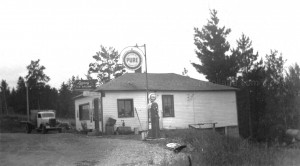
Holland’s Store, ca 1950s
In the distance ahead, a dim spot of light appeared. Another car going the wrong way? A flashlight? Someone walking? The light remained constant, and after what seemed like a mile, she reached the source, a yard light at a small country store, now closed for the night; it was Holland’s Store and Resort on Little Mantrap Lake.
My mother, sister, and I were asleep. My father had stayed up late, listening to the radio and reading. He was about to shut off the yard light when a gentle knocking attracted his attention. Who would be outside so late at night—after 11 o’clock? Someone with car trouble, or perhaps out of gasoline? Peering into the night, he was surprised to see a young girl. He opened the door to a trembling voice. “Can I use your telephone?” She breathlessly explained getting off at the wrong location with no idea of where she was or how far she might be from home. My father explained her location, then called Pine Hollow. Before long the girl’s relieved parents arrived to pick up their tearful daughter.
My sister and mother woke up, but I slept through the whole episode. I must have been tired, too. I was disappointed that nobody woke me up. I had missed all the excitement. The details were fully discussed at the breakfast table the next morning.
As a young boy, my parents wouldn’t let me ride the late Greyhound, but I believe the incident made me stay more alert when I returned on the bus from the Saturday Western matinees. I didn’t want to wake up lost in Bemidji.
Recently, two elderly passengers on an Amtrak night train missed their stop in St. Cloud. Rather than riding to the next stop at Fargo, 180 miles away, a crew member suggested that the train could stop to let them off. Not realizing that they were two miles into the country, the women agreed and stepped into the night to find nothing but darkness, crushed rock, rails, and a cold March wind. Like the girl on the bus, the women had no idea of where they were. But, unlike the young girl, they had each other and a cellphone, and ultimately someone figured out where to find them, huddled under a bridge.
It seems like in the past sixty-five years, the only thing that’s changed is how easy it is to make a phone call to get picked up at the wrong stop.
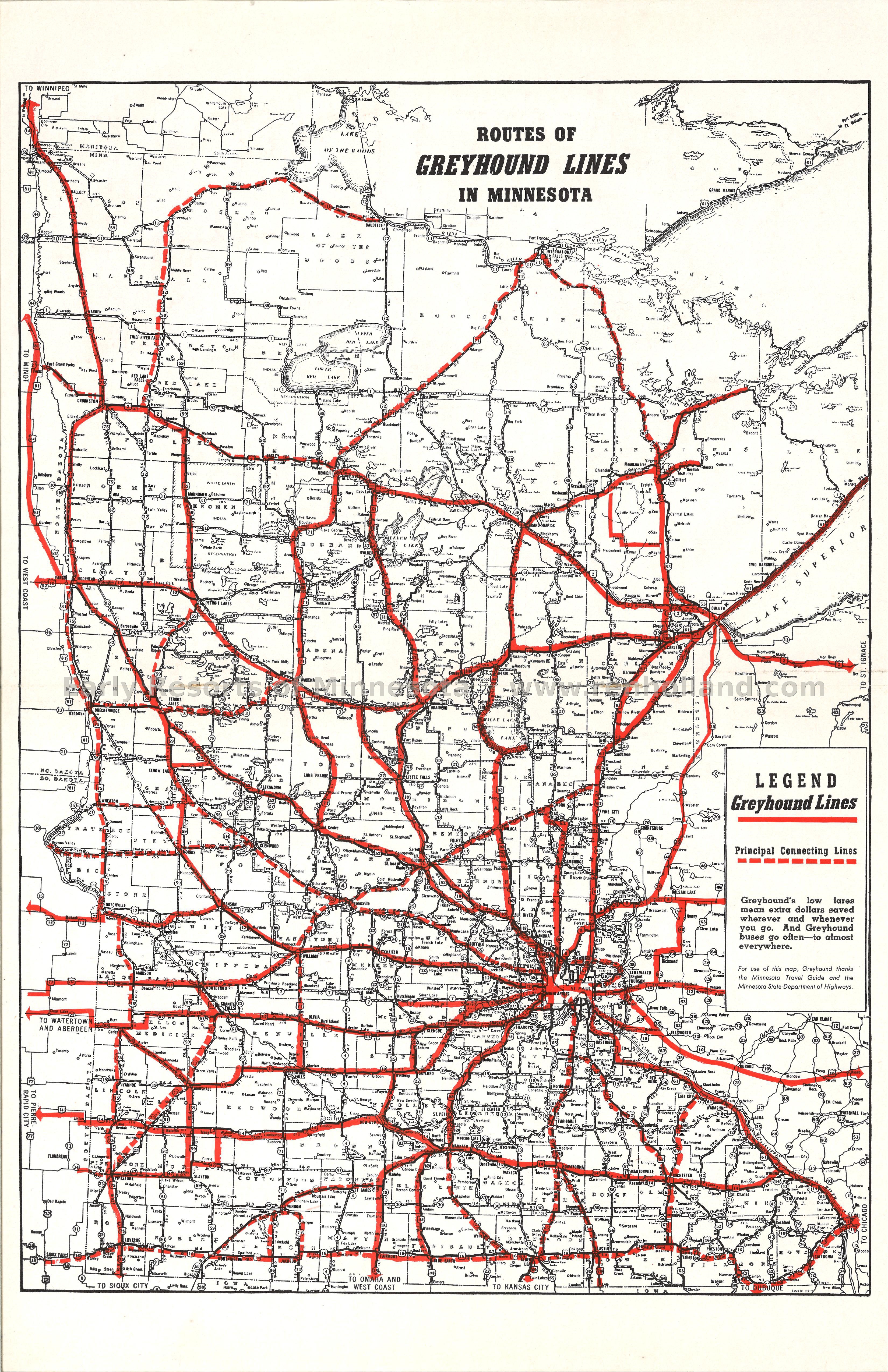 Click here if you’d like to view a 1954 Greyhound bus lines’ map (depending on your web browser, you should be able to click on the image to zoom in or out, then click the back arrow to return to this web page).
Click here if you’d like to view a 1954 Greyhound bus lines’ map (depending on your web browser, you should be able to click on the image to zoom in or out, then click the back arrow to return to this web page).
If you have a unique story you’d like to share on this blog, click here to submit it for consideration.

